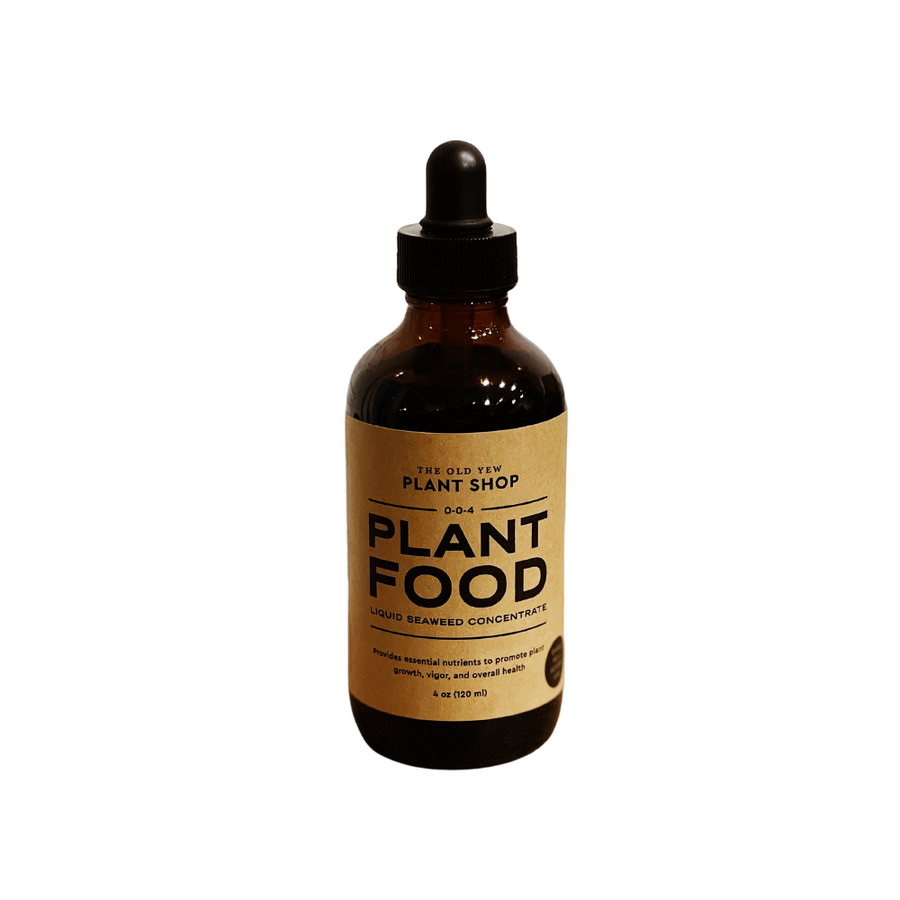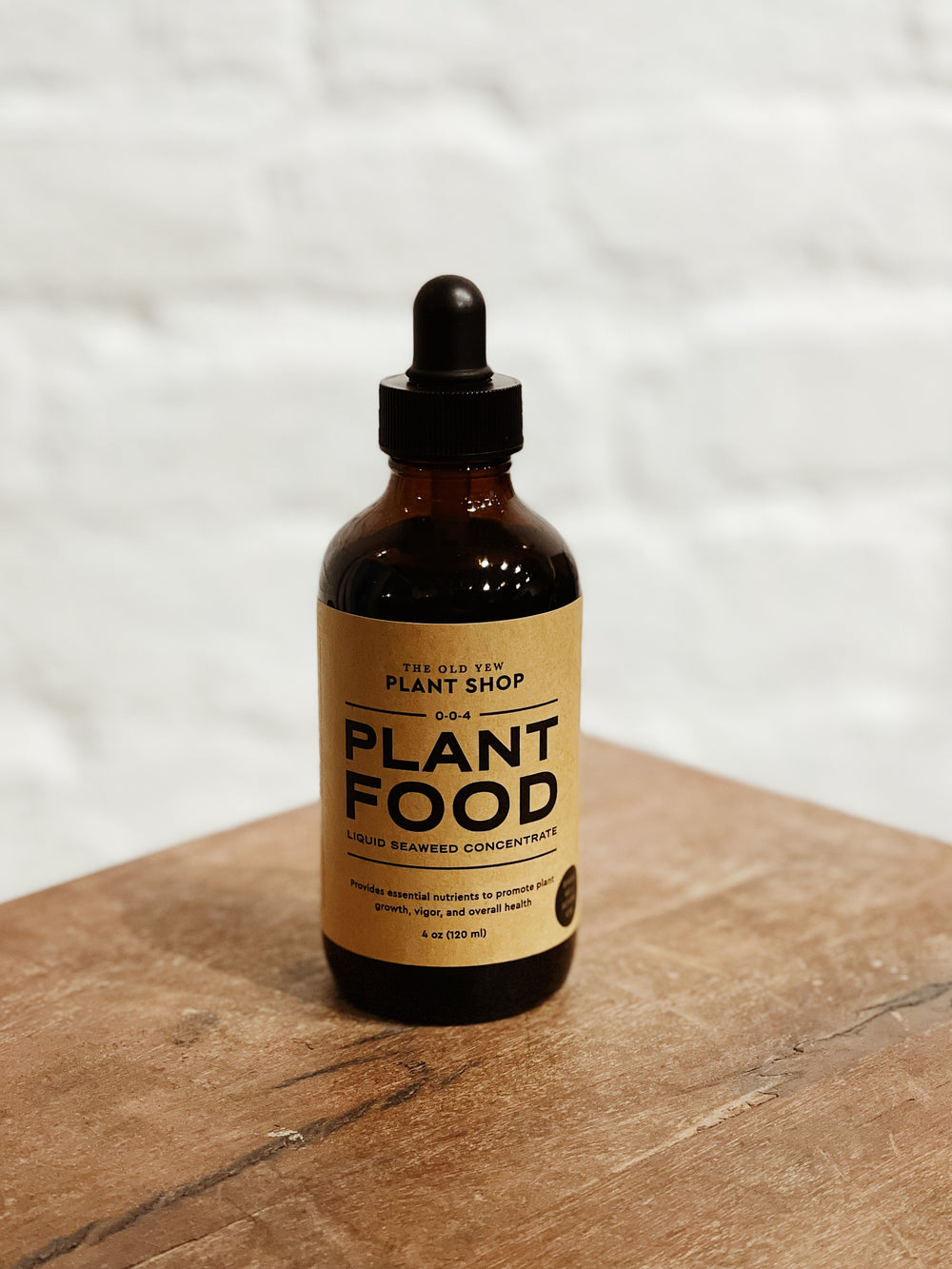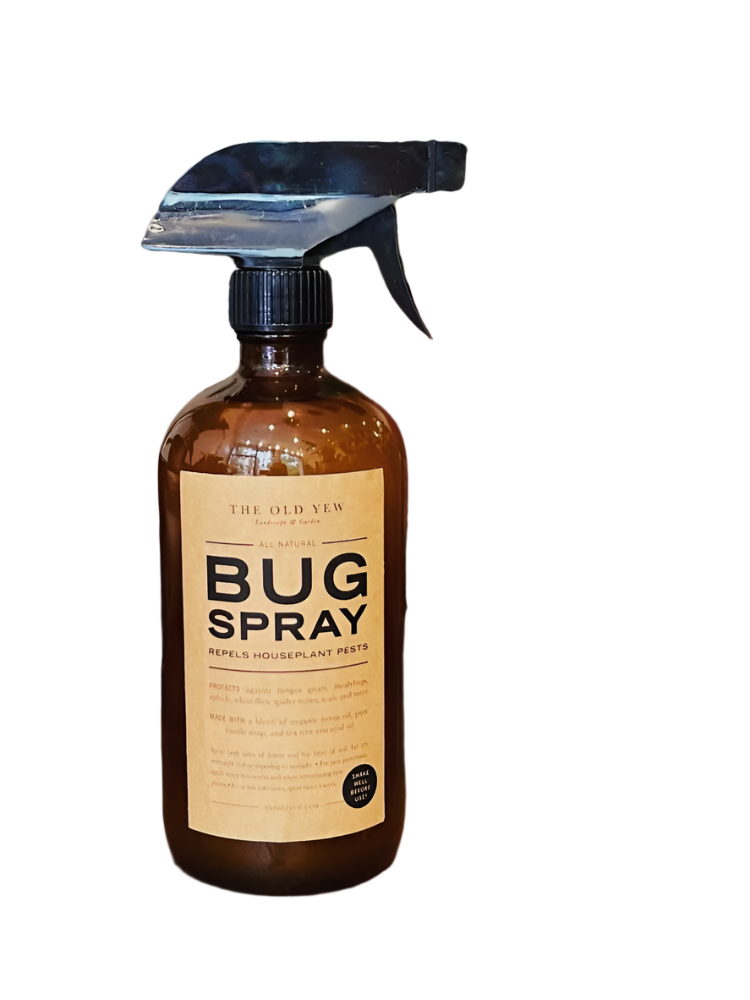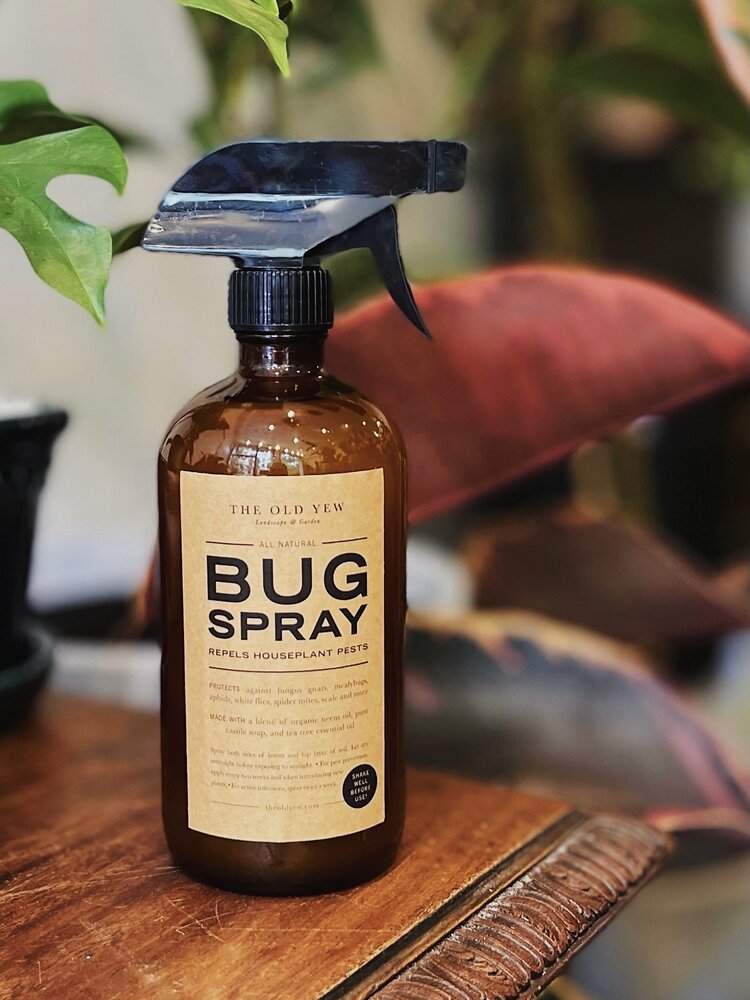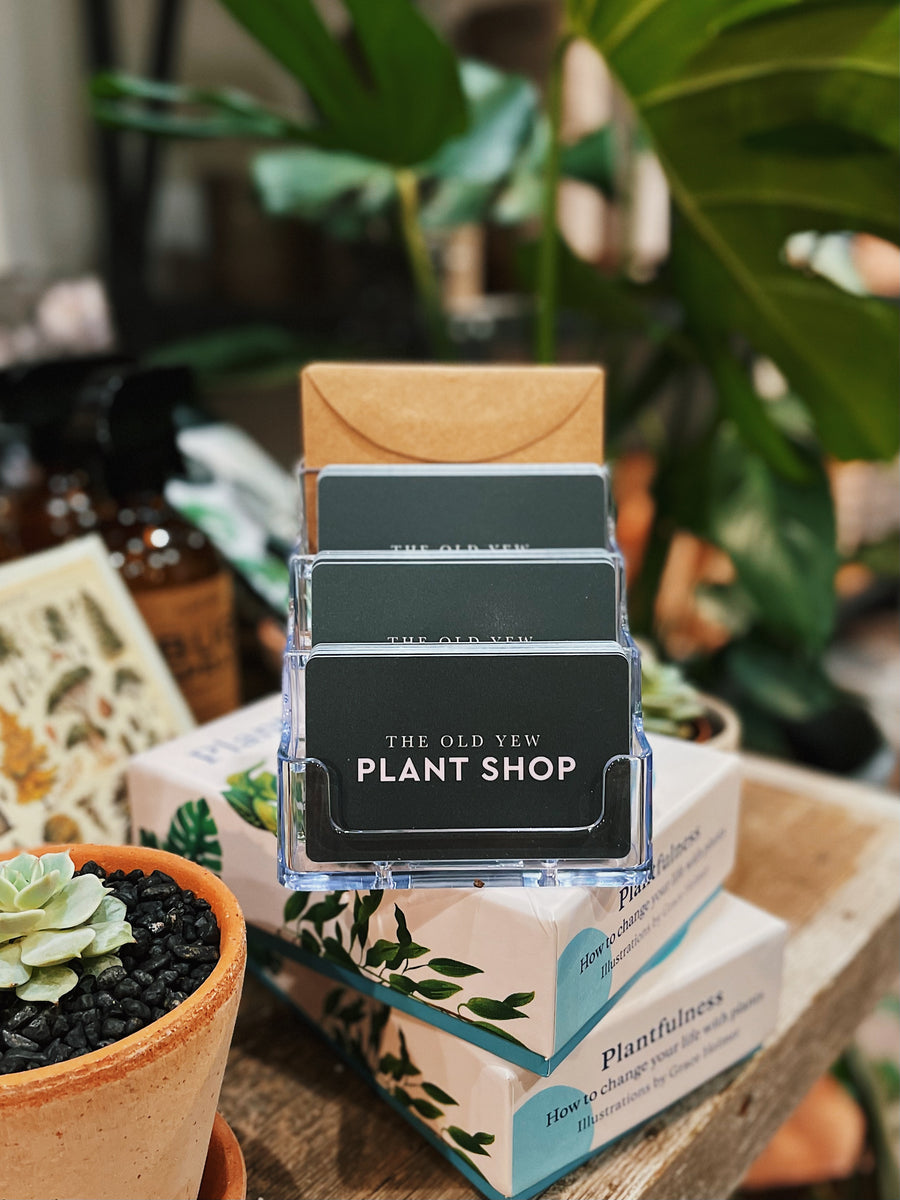Caring for Your Black Olive Tree: A Guide to Keep This Statement Tree Thriving Indoors
Thank you for purchasing a Black Olive Tree from The Old Yew! These elegant trees are a stunning addition to any indoor space, but they do require some specific care to ensure they thrive. Here’s a comprehensive guide to help you care for your tree and address common concerns.
1. Light Requirements
Black Olive Trees need ample light to thrive, ideally 6-8 hours of direct sunlight daily (emphasis on “ideally” – although we have successfully placed Black Olive trees in spaces that get less light than this, we find they have the most success here). Place your tree near a bright, south, east, or west-facing window. In lower light conditions, such as during winter or in less sunny environments, consider supplementing with grow lights to ensure your tree receives the light it needs.
2. Watering and Humidity
Proper watering is crucial for your Black Olive Tree. Water the tree thoroughly when the top inch of soil feels dry, but be cautious not to let the tree sit in its own water, as this can lead to root rot. Black Olive Trees also appreciate higher humidity levels. If you live in a dry climate, use a humidity tray or a room humidifier to maintain adequate moisture in the air.
3. Temperature Considerations
These trees prefer consistent, warm temperatures between 65-85°F. They are sensitive to cold drafts, so avoid placing them near windows or doors that may expose them to chilly air or near air conditioners or vents. In colder months, it's especially important to monitor the temperature around your tree to prevent stress – consider redirecting vents to avoid hot air blowing near the tree.
4. Leaf Shedding: Causes and Solutions
It’s very common for Black Olive Trees to shed leaves, especially when they are adjusting to a new environment. This shedding can be due to changes in light, temperature, or humidity, but most of the time, we find that trees need time to acclimate. If your tree is losing leaves, ensure it’s getting enough light and humidity, and that it's not underwatered. Patience is key—most trees will recover and begin to grow new leaves within a few weeks to a couple of months as they adjust to their new home.
5. Pruning and Maintenance
Regular pruning helps maintain the tree's shape and encourages healthy growth. Remove any dead or yellowing leaves, and trim back leggy branches to promote a fuller appearance. Pruning is best done in the spring when the tree is actively growing, but can be done any time of year.
6. Dealing with Scale Pests
Scale pests can occasionally be a problem for Black Olive Trees, causing the leaves to yellow, brown, and drop.
Understanding and Managing Scale Pests
What Are Scale Pests?
Scale pests are small, sap-sucking insects that attach themselves to the stems and leaves of plants, including Black Olive Trees. They appear as small, oval or round bumps, often resembling tiny scales or shells, and can be brown, gray, or white in color, although they are most commonly brown.
Impact on Your Tree:
-
Health Issues: Scale insects feed on the plant's sap, which can lead to yellowing leaves, stunted growth, and overall weakened health.
-
Sooty Mold: They excrete a sticky substance called honeydew, which can attract sooty mold fungus, further affecting the plant's appearance and health.
How to Identify:
-
Look for small, hard, immobile bumps on leaves and stems.
-
Check for sticky residue or black sooty mold on and around your tree.
Effective Management Strategies:
-
Manual Removal:
-
Gently wipe the affected areas with a soft cloth or cotton swab dipped in soapy water or rubbing alcohol to physically remove the pests.
-
Systemic Insecticide:
-
Apply a systemic insecticide that gets absorbed by the plant and targets pests from within, providing long-lasting protection.
-
The Old Yew Bug Spray:
-
Use The Old Yew Bug Spray, a natural and effective solution specifically designed to combat common houseplant pests like scale insects.
Prevention Tips:
-
Regular Inspection: Frequently check your tree for early signs of infestation.
-
Proper Care: Maintain optimal health through correct watering, lighting, and fertilization, as healthy plants are less susceptible to pests.
-
Isolation: If infestation occurs, consider isolating the affected plant to prevent spread to other houseplants.
By addressing scale pests promptly and effectively, you help ensure your Black Olive Tree remains healthy and continues to thrive indoors.
--
With the right care, your Black Olive Tree can be a long-lasting and beautiful addition to your indoor garden. By paying attention to its light, water, and temperature needs and proactively preventing pests, you can enjoy a thriving tree for years to come.
If you encounter any issues, remember that these trees are very resilient and can often bounce back with a little patience and care.
Feel free to reach out to us with any further questions or concerns. Happy growing!


